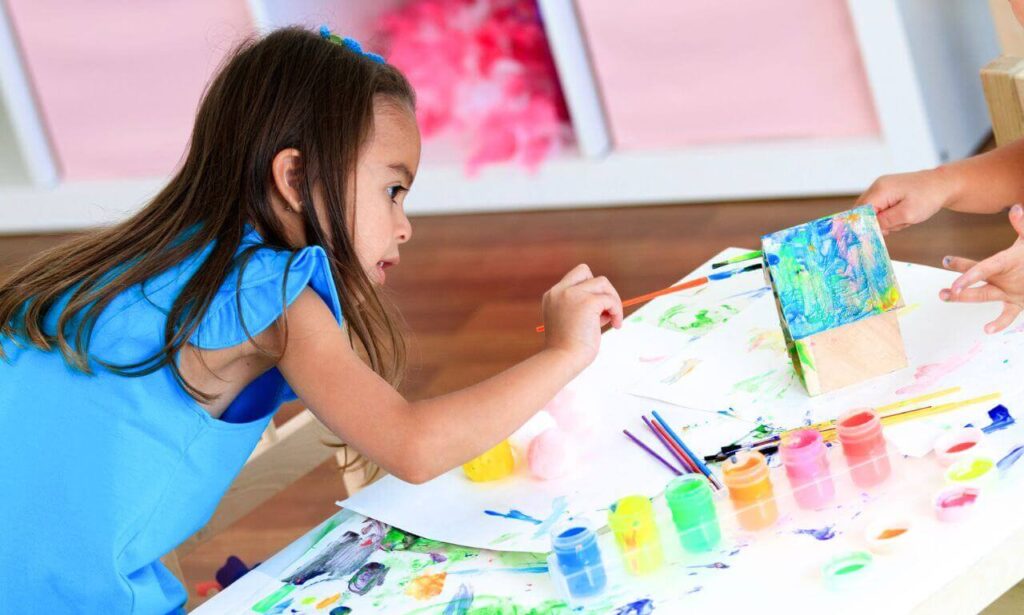Every child loves to draw. Whenever they get a pen or any writing material, you will see them busy drawing on walls or whatever paper they can get their hands on. If nothing is available, they draw on their bodies, ignoring the cheap $50 whiteboard you bought. Opting to draw on the wall or their bodies is irritating, but the act of drawing comes with tons of benefits.
According to research, drawing improves memory retention because it’s an active way for children to understand information. Drawing engages their visual, kinesthetic, and semantic brain functions, which helps them retain the information better than if they saw pictures of, wrote, or read the information multiple times.
The Science Behind Drawing and Memory
Experts in the science of memory Myra Fernandez, Melissa Meade, and Jeffrey Wammes conducted an experiment at the University of Waterloo on the science behind drawing and memory. The scientists wanted to understand how learning activities like writing, reading, listening, and drawing differ in students’ ability to retain information.
Students, and older people, had to study a list of common items given to them. The students would then write, read, or draw items representing the words. It didn’t matter how well the drawings were as long as the students understood what they represented.
They participants were then asked to recall the words they read, wrote, or drew. From the study, Fernandez noted that participants remembered 20 percent of the words they wrote or read, but a whopping 45 percent – including older people, remembered the words they drew.
The scientist did a follow-up experiment where they asked students to write definitions of complex science concepts multiple times versus drawing the concepts.
In their finding, Fernandez said, “drawing is an effective and reliable strategy far superior to writing,” as far as memory retention is a concern.

How Memory Works
Let’s learn a little science. Dr. Joe Dispenza, a neuroscientist, says that neurons that fire together wire together. Neurons are little information messengers that send the needed information to different parts of the brain and from the brain to other parts of the body.
If you fall, for example, neurons send the pain message to the appropriate part of the brain and the rest of the body, so you know exactly which body part has been injured.
According to Dr. Dispenza, learning happens when neurons forge new connections (fire and wire together). As you learn, you fire and wire this information together, storing it in your brain.
Interestingly, when we learn something new, we naturally forget 50 percent within an hour, two-thirds by the end of the day, and 89 percent by the end of the month. This is according to Herman Ebbinghaus, a German psychologist who came up with the forgetting curve and pioneered work in memory.
What Makes Drawing a Powerful Memory Tool
To retain more information, neurons need to wire and fire together so strongly that you retain more of the 50 percent you would have lost when you learn a new concept.
When drawing, your child engages the neurons connecting their kinesthetic memory through hand movement, the visual memory by seeing the image, and the semantic memory by deriving meaning from the action of drawing and seeing the image they drew.
All these neurons wire and fire together, forming a strong connection than when your child passively looks at an image or repeats words numerous times. This increases the chance that your child will remember the concept they were learning.

How to improve your child’s memory through drawing
From all the science we have learned, you can improve your child’s memory by allowing them to illustrate what they have heard or read. It doesn’t matter if the drawing looks like sticks or a cuter version of Picasso’s works. They just have to illustrate and understand it.
But, exactly how do you do that? It’s probably going to be tricky when you start, so we lined up 5 instances where you can use drawing to help your child learn and improve their memory. These are:
- Concepts like sharing and empathy. You can ask your kid to draw themselves while sharing, caring for others, and showing kindness.
- Learning about and expressing their emotions. Kids often find expressing their emotions difficult. Asking them to draw how they feel is a great way to help them process their emotions and relax.
- While reading books. Read a paragraph or passage from a book, and your child to draw what they understand from the passage within 40 seconds. This helps them process and retain information quickly.
- While traveling. A great way to help your child remember vacations and interesting things they did is to draw what stood out to them each day.
- As they take notes in class. If you have older kids, ask them to doodle as they take notes in class. They can also use arrows to connect ideas and doodles they draw, thus helping them retain concepts better.
So, will you get irritated when your kids draw on the wall? You bet, and I’m sure I would too. While drawing is a great way to learn and retain information, we also don’t want to spend the day cleaning walls or little bodies full of pain and drawings. However, let’s find ways to encourage kids to draw and express themselves because drawing is a great step toward learning.




